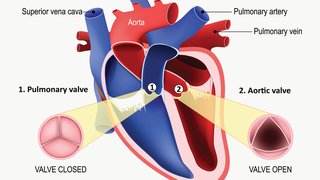Lipid apheresis helps control chronic high cholesterol and FSGS
September 22, 2023

Regular oil changes are an essential part of keeping your car running smoothly. Without them, the oil becomes sludge-like, resulting in poor performance or even engine failure.
Blood is our body’s oil, and while most people don’t need to change it every few months, there are some patients who benefit significantly from cleaning out the cholesterol debris from their plasma on a regular basis. The process, called lipid apheresis, can dramatically reduce their risk of life-threatening conditions such as heart attack, stroke, and peripheral artery disease.
Low-density lipoprotein (LDL) is commonly known as “bad” cholesterol, while high-density lipoprotein (HDL) is often called “good” cholesterol, but we need both to keep our bodies running at peak condition. If LDL levels get too high, though, they increase the risk of cardiovascular complications.
For example, people who have familial hypercholesterolemia (FH), an inherited genetic disorder, have extremely high levels of “bad” cholesterol – low-density lipoprotein (LDL) cholesterol – regardless of their diet and exercise habits. Statins and PCSK9-inhibitor medications can help with FH, but in some patients, medications alone are not enough to control their LDL. And that’s where lipid apheresis comes in.
UT Southwestern is one of the few centers in the U.S. that offers this nonsurgical therapy, which separates and removes LDL, very low-density lipoprotein (VLDL), lipoprotein(a), and triglycerides (TG) from the blood while leaving behind HDL and other proteins and antibodies. The procedure can significantly reduce LDL levels and help prevent a heart attack or stroke.
Lipid apheresis can also be used to treat patients with very high levels of lipoprotein(a), or Lp(a). Even if LDL levels are within normal range, a high Lp(a) level is a major risk factor for cardiovascular disease. Unfortunately, diet, exercise, and most available medications have little to no effect on Lp(a) levels. For these patients, lipid apheresis can decrease Lp(a) by 60% to 75% in a single session.
Lipid apheresis can also be effective in treating some forms of focal segmental glomerulosclerosis (FSGS), a rare kidney disease.
Related reading: New drugs approved for lowering cholesterol – and the story has roots at UT Southwestern
Treating four generations of familial hypercholesterolemia
Familial hypercholesterolemia affects how the body processes cholesterol and raises the risk of heart attack or stroke. One woman's decision to participate in early research on the condition at UT Southwestern has paid dividends for her family – and millions of other patients.
How lipid apheresis works for LDL cholesterol
Apheresis is a process in which substances are removed from the blood. Plasma exchange is probably the best-known type of apheresis, and it involves removing blood through a peripheral IV, central line catheter, or arteriovenous (AV) fistula and then spinning it in a high-speed cylinder to separate the plasma from the other cellular components of the blood. In plasma exchange, the plasma is discarded (along with harmful substances causing disease) and a replacement fluid is returned to the patient in its place.
Unlike plasma exchange, lipid apheresis is a more specific process in which we remove only specific lipoproteins and triglycerides from the blood. Once the plasma is separated in the apheresis machine, we send it through a column filled with tiny beads coated with a molecule called dextran sulfate. Dextran sulfate has a strong negative charge, while triglycerides and lipoproteins such as LDL, VLDL, and Lp(a) have a strong positive charge. The dextran sulfate absorbs the lipoproteins while leaving HDL in the plasma. The plasma then rejoins the other blood components and is returned to the patient’s body.
Lipid apheresis is a long-term therapy, not a cure, and it is administered in combination with medication, diet, and exercise recommendations. Typically, the goal is to keep LDL levels below 100-120 milligrams per deciliter. Lipid apheresis can take four to six hours and is repeated based on your cholesterol levels. Though every patient is different, most start with weekly treatments, with the option to increase the interval between treatments to every two weeks or potentially longer based on lipid levels.
Related reading: Study uncovers link between two key risk factors for first-time heart attack, stroke
Lipid apheresis for FSGS
FSGS is a condition that causes scar tissue to form in the filters in your kidneys, reducing their ability to clean your blood. It can lead to kidney damage or kidney failure, as well as hypercholesterolemia – or very high cholesterol. In turn, the high cholesterol levels have a toxic effect on the kidneys and worsen the damage that occurs in FSGS.
By removing lipids from the blood, we can improve kidney function and potentially heal FSGS-related kidney damage when standard therapies are not tolerated or are effective enough. Lipid apheresis is also an option for patients who experience a recurrence of FSGS after a kidney transplant.
Lipid apheresis treatment for FSGS consists of 12 treatments over nine weeks: two sessions a week for three weeks, then one session a week for six weeks.
While lipid apheresis is not always curative, it can enhance traditional treatment. Additionally, some FSGS medications don’t work as well when cholesterol levels are high, so removing lipids from the blood can improve the effectiveness of the other treatments in addition to reducing the toxic effect that high cholesterol has on the kidneys.
Lipid apheresis can also help prevent the progression of kidney disease or even cause it to go into remission. The landmark POLARIS study showed that about half of patients go into remission with only lipid apheresis and remained in remission after two years.
Seek care from lipid apheresis experts
The therapeutic apheresis program at UT Southwestern, which includes doctors, advanced practice providers, registered nurses, and certified apheresis technicians, is recognized in apheresis care, providing inpatient and outpatients services seven days a week.
We will collaborate with you and your referring provider to determine whether lipid apheresis is right for you and, if so, develop a personalized treatment plan.
To learn whether lipid apheresis might help control your cholesterol levels, call 214-645-8300 or request an appointment online.










